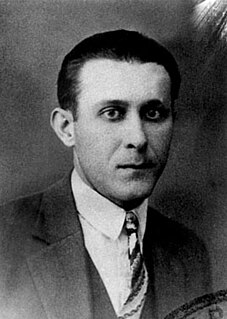Related Research Articles

Georgije "Đura" Jakšić was a Serbian poet, painter, writer, dramatist and bohemian.

Serbian art refers to the visual arts of the Serbs and their nation-state Serbia. The medieval heritage includes Byzantine art, preserved in architecture, frescos and icons of the many Serbian Orthodox monasteries. In the Early modern period, Serbian visual arts began to be influenced by Western art, culminating in the Habsburg Monarchy in the late 18th century. The beginning of modern Serbian art is placed in the 19th century. Many Serbian monuments and works of art have been lost forever due to various wars and peacetime marginalizations.

Jovan Karamata was a Serbian mathematician. He is remembered for contributions to analysis, in particular, the Tauberian theory and the theory of slowly varying functions. Considered to be among the most influential Serbian mathematicians of the 20th century, Karamata was one of the founders of the Mathematical Institute of the Serbian Academy of Sciences and Arts, established in 1946.
Vikentije (II) was the fourth partriach of the reunified Serbian Orthodox Church, from 1950 until his death.

Georgije Bakalović was a Serbian painter.
Joan Çetiri, Grabovari also as Jovan Četirević Grabovan, was an icon painter from Albania active during the 18th century; he is regarded one of the masters of Orthodox iconostases painting. Among others, he painted the Lepavina and Orahovica monasteries, and together with his brother Gjergj, many churches in Serbia and in Albania, like The Dormition of the Theotokos’ Church in Berat, Saint Nicholas’ Church in Vanaj, Fier, and Saint Athanasius’ Church in Karavasta (Myzeqe).

Seoba Srba is a set of four similar oil paintings by the Serbian artist Paja Jovanović that depict Serbs, led by Archbishop Arsenije III, fleeing Old Serbia during the Great Serb Migration of 1690–91. The first was commissioned in 1895 by Georgije Branković, the Patriarch of Karlovci, to be displayed at the following year's Budapest Millennium Exhibition. In the view of the Serbian clergy, it would serve to legitimize Serb claims to religious autonomy and partial self-administration in Austria-Hungary by upholding the contention that Serbs left their homeland at the behest of the Holy Roman Emperor to protect the Habsburg Monarchy's borders.

Karamata family house is the cultural monument. It represents the cultural property of a great importance to Belgrade and is situated in Zemun, at 17 Karamatina Street.
Arsenije Teodorović was a Serbian painter from the Banat region of Vojvodina who is widely considered one of Serbia's foremost portraitists. His best known work is the portrait of Dositej Obradović, the father of modern Serbian literature. Shortly before he died, Teodorović bequeathed more than 1,000 paintings to the founder of the Arts and Crafts School of the Metropolitanate of Karlovci, Stefan Stratimirović.

Jovan Popović was a Serbian portrait painter.
Branko Radulović (1881–1916) was a Serbian painter. At the turn of the 20th century the first group of modern-day, academically-trained painters emerged on the Belgrade art scene in Bosnia and Hercegovina: Branko Radulović, Djordje Mihajlović,Gabriel Jurkić, Todor Švrakić, Petar Tiješić, Karlo Mijić, Djordje Mazalić, Jovan Bijelić, and Roman Petrović. Among his peers, it is said Branko Radulović showed "exceptional culture and promise," though his life was cut short in the middle of the Great War.
Pavle Petrović also variously spelled Pavel Petrovits, Paul Petrovits, Paulus Petrovitz, Paulus Petrovits and Pablo Petrovits was a Serbian painter. He can be considered among the first 19th-century European-trained painters who decided to make a living by traveling for forty-year across all continents, leaving portraits behind him that capture the best of European Romanticism of the time. His works can be found in museums and private collections in Serbia, Romania, England, India, China, the United States of America, Hawaii, Chile, Peru, Canada, Australia, Egypt, and Italy.
Miloš Tenković was a prominent Serbian painter. His style is characteristic of the realistic school of the period.
Vladimir K. Petković was a geologist, professor, dean of the Faculty of Philosophy and later rector of the University of Belgrade. He was succeeded as rector in 1934 by colleague Aleksandar Belić.
Jovan Hristić was a Serbian poet, playwright, essayist, literary and theater critic, translator, editor of Literature, Danas and editor at IRO Nolit.
Georgije Mišković was a Serbian icon painter during the Serbian Baroque period of the 1760s and the 1790s. He worked on commissions with painters Teodor Kračun, Grigorije Davidović-Obšić and many others.
Nikola Milojević was one of the most prolific Serbian portraitists of his generation.He was also a popular Belgrade studio photographer,a representative of academic realism of the 19th century along with many of his colleagues.
Stamenko Đurđević was a Serbian sculptor and author. Stamenko was one of several Serbian sculptors of his generation at the time, namely Živojin Lukić (1889-1934), Marko Brežanin (1885-1956), Dragomir Arambašić.
Pahomije Tenecki was a Serbian 17th-century painter.
Mihajlo Živković was a Serbian academic painter who lived and worked during the late Baroque and rococo period. He painted in the European neoclassical style.
References
- ↑ Stelè, Francè (December 12, 1971). "Art on the Soil of Yugoslavia from Prehistoric Times to the Present". Federal Commission for Cultural Relations with Foreign Countries – via Google Books.
- ↑ Ćorović, Ljubica (December 12, 2004). Belgrade Tourist Guide. Kreativni centar. ISBN 9788677812423 – via Google Books.
- ↑ "Karamata family home Belgrade, Karamata family home in Belgrade". 011info - the best guide through Belgrade.
- ↑ "Izložba o Savi Tekeliji u Istorijskom muzeju Srbije". Blic.rs.
- ↑ Pavić, Milorad (December 12, 1998). Last Love in Constantinople: A Tarot Novel for Divination. Peter Owen. ISBN 9780720610352 – via Google Books.